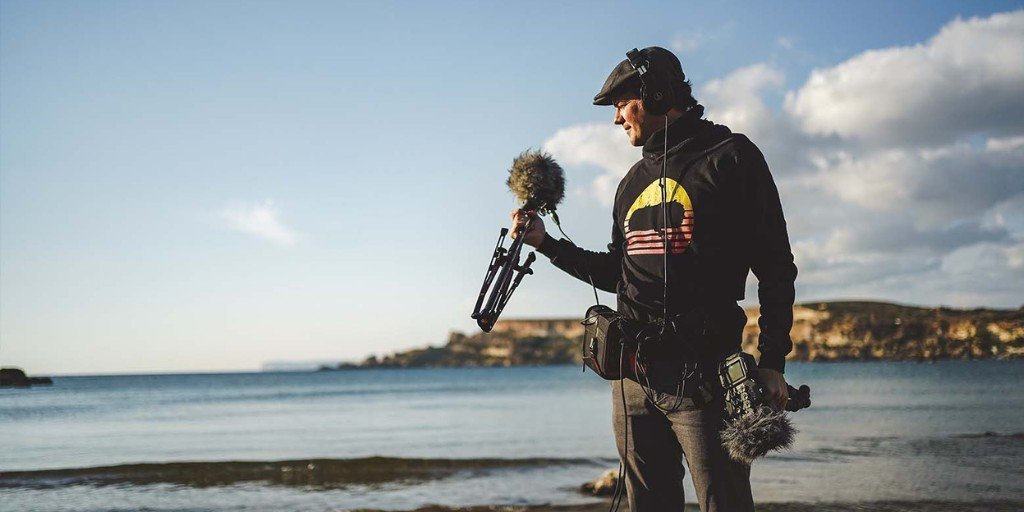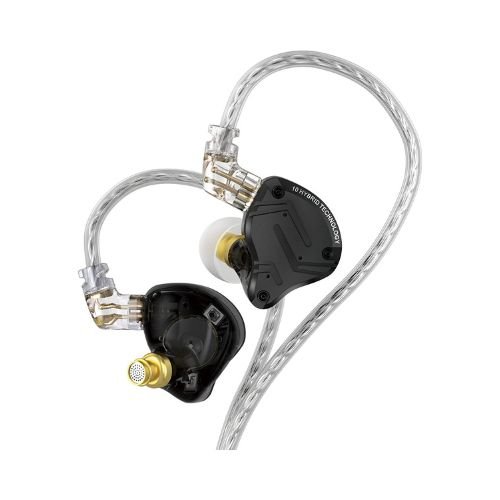How Do I Get Started with Field Recording
“I’m tired of sitting around… I want to go out and record sounds!”
How Do I Get Started With Field Recording?
Hey hey! Welcome to the wonderful world of field recording! We're Libby and Marcel and we spend our days and night chasing after sounds like a couple of audio-obsessed mad scientists. We're so stoked you found your way to our corner of the internet and we're ready to give you the inside scoop on how to start your own field recording adventure. Trust us, it's gonna be a fun and rewarding. Who doesn't want to travel the world and follow their passion for recording sounds?
Take a moment to listen to your surroundings. Pause reading this post, grab a pen and paper, and shut off any background music or tv. Close your eyes and focus on what you can hear. Is it the hum of the air conditioner, the gentle buzz of the fridge, or the sounds of passing cars on the nearby road? Write down everything you hear - these will be your keywords for later.
Starting with sound recording is all about listening. Step outside and take a moment to listen to the world around you. You'll be amazed at the abundance of sounds waiting to be recorded by you - and with the right equipment, you can do just that.
From the toilet flush of your apartment to the birds singing in the trees, the world is your oyster when it comes to sound recording. So let's get started!
What is the best gear for field recording on a budget
When it comes to gear, don't get hypnotized by all the new and shiny objects hitting the market. Just because it's fresh off the assembly line, it doesn't mean it's necessarily better than what's been available for years. Keep an eye out for what content creators are telling you (or what they're not telling you) about the latest gadgets. At the end of the day, remember that it's not about the latest gear you have, it's about how you use it. So, focus on honing your skills and techniques, and the rest will fall into place.
Starting with the Zoom H1n
At the end of the day, it's all about making a decision, and we're here to recommend one that could change your life. This recorder has been the game-changer that kickstarted our successful field recording business, and we want to share that with you. We're not going to overwhelm you with 10 different options - just one that we know can make a big impact on your journey. So get ready to start capturing incredible sounds and taking the first step towards a future filled with adventure and creativity with the Zoom H1n!
We can't get enough of this amazing little field recording device! It's been our go-to for recording sounds on the streets, in the wild, and everywhere in between. So we decided to take it on a journey through the bustling city of Osaka, to demonstrate just how powerful and versatile it is.
Why Do I need Wind Protection To Record Sounds
Have you ever asked yourself, "What's the best mic for recording rain, wind, or nature sounds?" Well, let me tell you, it's not as simple as grabbing a mic and hitting record. Out in the field, you might notice your headphones pick up heavy rumbles and distorted audio, which is definitely not what you expected to hear. Don't worry though, it's just the wind playing tricks on your mic.
But don't despair, my friend! Some companies have dedicated their lives to protecting your gear and recordings from this "winderful" element. And guess what? Using wind protection means you can actually record crisp and clean wind sounds, which are super popular for sound libraries. So, if you want to avoid muffled audio and embrace clear recordings, make sure to protect your mic from the wind.
We're not just all talk - we're about action! In fact, we made a video to show you a comparison between a $20 wind jammer and a $1200 wind basket. You don't need to break the bank to get started with wind protection but it's important to think about it. Trust us, your ears (and your listeners and buyers) will thank you for it!
What are the best headphones for field recording
Choosing the right headphones can be a tricky task, and it all boils down to personal preference. Do you like the snug fit of in-ear headphones, or the comfort of over-ear ones? Do you want to keep them in your pocket as part of your everyday carry kit, or store them in your backpack with the rest of your gear? Well, guess what? I've found some fantastic in-ear headphones that I've been absolutely loving lately. No more hauling around bulky over-ear headphones for me! Plus, when you're using a Zoom H1n or another small handheld recorder, there's no need to purchase headphones three times the size. And these in-ear headphones are great for editing, too!
By the way, we've also written an article on the best affordable headphones!
All you need to get started with field recording
If you are recording with more than two channels, I recommend to use a power bank or an NP-F Lithium-ion battery.
I recently purchased the Nitecore NB10000 Gen 2 Power Bank, and I have to say, I am thoroughly impressed! This small and lightweight device is a must-have for any field recordist. It offers a long-lasting and reliable power source, making it a great investment for anyone looking to enhance their recording setup.
It also fits perfectly in the Ktek bag for Zoom F6 bag, and can be used to power your Zoom H6 or Tascam X8 as well.
Libby, uses a Watson NPF 7700 battery, and I was intrigued to try it out. I must say, it exceeded my expectations. I tested it by recording on all six channels and after many hours, the battery was still going strong with 4400mAh. This compact setup is perfect for my recording needs and I would definitely recommend it.
It’s important to note that the batteries come in different mAh versions, so it’s crucial to determine which one is right for you. Should you choose a power bank, Lithium-Ion Battery Pack, or regular batteries? Make sure to adjust your Zoom F6 settings to match your choice of power source.
Conclusion
Amidst the vast array of gear and techniques, one truth remains: it's not about the latest gadgets or the most expensive equipment. Instead, it's about honing your craft, refining your skills, and embracing the power of simplicity.
The recommendation of the Zoom H1n as a reliable companion in the field underscores this principle – a reminder that sometimes, the most significant impact comes from the simplest choices. So, as you venture into the world of field recording, armed with curiosity and creativity, remember that the magic lies not in the gear you possess, but in the stories you unravel and the emotions you evoke through the power of sound.










